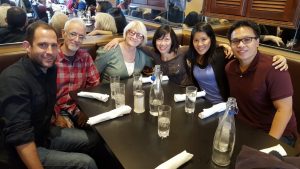 There are three different types of networks. One comes together primarily for support. The people get together, build relationships, encourage each other, and pray for each other. As long as you show up and are helpful, the network fulfills its purpose. A second type is primarily for learning: practitioners get together to share from their experiences and what they’re doing. Some of these end up not being sustainable because there’s not a clear intended outcome– just learning, but with no practical application.
There are three different types of networks. One comes together primarily for support. The people get together, build relationships, encourage each other, and pray for each other. As long as you show up and are helpful, the network fulfills its purpose. A second type is primarily for learning: practitioners get together to share from their experiences and what they’re doing. Some of these end up not being sustainable because there’s not a clear intended outcome– just learning, but with no practical application.
The third type is a combination of the first two– support and learning– but with a focus on stated outcomes. I call this an “outcome-based learning community.” I find that these are the most powerful networks… the ones where there is a clear, agreed-upon outcome that everyone is trying to achieve. Not everyone necessarily has to work on it together or do it all in the same way. For example, maybe each member is trying to develop a discipleship process for their church. It may look different from church to church, but there is a clear intended outcome that is the destination they’re all trying to get to.
I’ve been involved with various types of networks since about 1990. The secret to making them work is having clarity on what you’re working toward. Then the people in an outcome-based learning community can support one another, receive and respond to coaching outside of the learning community meetings, and be willing to be held accountable. In recent groups I’ve worked with, I’ve helped them build in that accountability function. It’s the piece that most likely to be left out. But if they build in a cycle of reporting back on progress, they move more effectively toward their goals.
